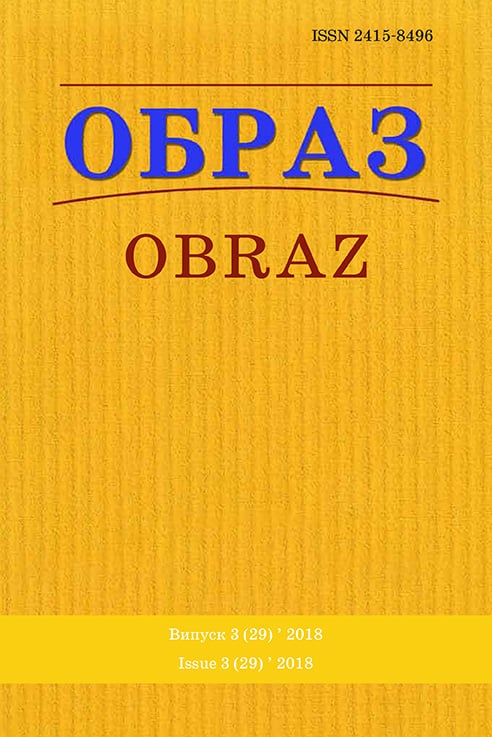Abstract
Introduction. Lately, the issue of local lore has been widely articulated in the media discourse that continues the process of redefining historical narratives and searching for national identity. Mass media have faced that need to create a new system of values and to consolidate around the primary tasks of national state building. Relevance and aim. The relevance of the issue is defined by people’s increased interest in the history and modern life of their region, its local peculiarities and traditions. The local media reflect and retain historically and culturally important events of the area, region, city or village, as well the information about the people and institutions that have played a defining role in the history, spiritual life, science and culture of the region. Moreover, local lore materials that are nowadays published in the modern print media are some of the most instrumental tools for controlling the process of the revival and development of the nation’s culture, language and literature, restoring its socio-cultural environment, creating and reproduction of the scientific and creative potential of a specific region. The aim of this work is to study the topical variety and periodicity of local lore historical materials on the pages of Ternopil print publications issued in 2000–2005 that deal with events important to Ukraine. Methods. The primary method used in our research is the qualitative-quantitative method of document study, namely content-analysis. Therefore, the present local lore historical material has been given an objective, system and quantitative description, and several local lore information flows have been juxtaposed (in our case three newspapers have been juxtaposed as three verbal flows). Results. The materials written by different authors in various genres, including short articles, reports, correspondence, interviews, articles and others, prevail in the publications with the historical and local lore content found in such issues as “Vilne zhyttia”, “Svoboda”, “Ternopil Vechirnii”. Based on the analysis of local lore historical publications in Ternopil region periodicals one may state that they, as a whole, are a separate source array for studying local history. Conclusions. The analysis of suggested Ternopil region newspapers issued in 2000–2005 demonstrates that the subject of history has always been relevant in the local press. The historical and local lore subject has always been one of the leading ones in spreading the achievements of the national local lore thought. On the other hand, these texts have been and still are creating an important layer of local lore publications. One can therefore conclude that newspapers are a rich source for studying national history, including that of the Ternopil region as one of its regional components, that they highlight the issues of the establishment and development of local lore study in the region, and are a direct source for historians, local lore specialists, librarians, writers.
References
1. Vermenych, Yа. (2004), «Istorychna rehionalistyka i kraieznavstvo: dialektyka spivvidnoshennia», Istoryko-heohrafichni doslidzhennia v Ukraini: Zbirnyk nsukovykh prac, vol. 7, pp. 29–47.
2. Steblyna, N. (2017), Brakuie pozytyvnykh prykladiv, available at: https://day.kyiv.ua/uk/ article/media/brakuye-pozytyvnyh-prykladivх(access September 17, 2018).
3. Demianchuk, H. S. (2006), Ukrainske kraieznavstvo: storinky istorii [Ukrainian ethnography: pages of history], Prosvita, Kyiv, Ukraine, 296 р.
4. Ternopilski zhurnalisty: Vilne zhyttia plius (2013), available at: https://poglyad.te.ua/ podii/ternopilski-zhurnalisty-vilne-zhyttya-plyus.html (access September 17, 2018).
5. Duka, O. G. (2005), «Diskurs istoricheskoj nauki i diskurs identichnosti», Diskurs Pi: Nauchno-prakticheskiy almanakh, vol. 5, pp. 170–172.
6. Kushnarenko, N. M. (2007), Bibliotechne kraieznavstvo [Library Local History], Znannia, Kyiv, Ukraine, 502 р.
7. Ankersmit, F. (2003), Narrativnaya logika. Semanticheskiy analiz yazyka istorikov [Narrative Logic: A Semantic Analysis of the Historian’s Language], Ideya-press, Moscow, Russia, 360 р.
8. Holubko, V., Kacharaba, S., and Serediak, A. (2005), Istorychne kraieznavstvo [Historical local studies], tutorial, part 1, Vydavnychyi tsentr Ivan Franko National University of Lviv, Ukraine, 130 р.
9. Zashkilniak, L. (2006–2007), «Istorychna pamiat ta istoriohrafiia yak doslidnytske pole dlia intelektualnoi istorii», Ukraina: kulturna spadshchyna, natsionalna svidomist, derzhavnist, vol. 15, pp. 855-862.
10. Lytvynenko, N. (2009), Kraieznavcho-bibliohrafichnyi kontent veb-saitiv bibliotek Donbasu yak skladova kraieznavchoi elektronnoi biblioteky, Visnyk Knyzhkovoi palaty : Naukovopraktychnyi zhurnal, vol. 7, pp. 39–42.

This work is licensed under a Creative Commons Attribution 4.0 International License.

